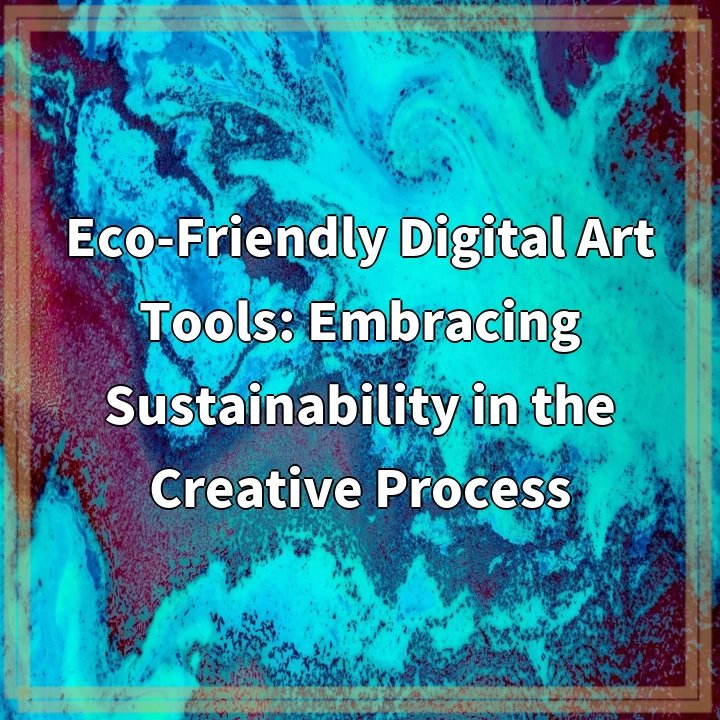
What it is:
With the advent of technology, digital art tools have transformed the creative landscape. These tools encompass various software programs, devices, and applications that allow artists to create stunning digital artwork. However, as environmental awareness grows, it becomes crucial to examine the sustainability of these tools and their impact on the planet.
Real-World Problems:
1. E-Waste: One of the major concerns associated with digital art tools is electronic waste or e-waste. As technology rapidly evolves, many artists upgrade their devices frequently, leading to a significant amount of electronic waste being generated. Improper disposal of e-waste can harm the environment, as it contains toxic substances like lead, mercury, and cadmium.
2. Energy Consumption: Operating digital art tools requires a substantial amount of energy, contributing to greenhouse gas emissions. High-power devices such as computers and tablets consume electricity, and if the source of that power is not renewable, it can contribute to carbon emissions and climate change.
3. Material Consumption: Digital art tools also require the production of physical materials, such as tablets, styluses, and other accessories. The extraction and manufacturing processes associated with these materials can have negative environmental impacts, including resource depletion and pollution.
4. Product Lifespan: Many digital art tools have shorter lifespans compared to traditional art supplies. This can be due to software updates, device compatibility issues, or the rapid advancement of technology. The frequent replacement of these tools further contributes to e-waste generation.
5. Carbon Footprint of Data Centers: Storing and transmitting digital artwork requires data centers that consume a significant amount of energy. The carbon footprint of these data centers, which are necessary for cloud storage, can be significant, especially if the energy source is not renewable.
By understanding these real-world problems associated with eco-friendly digital art tools, we can explore potential solutions and environmentally conscious alternatives. Stay tuned for the next sections of this blog series, where we will delve deeper into exploring the topic and examining case studies or examples.

Solutions to Real-World Problems:
Finding eco-friendly alternatives and adopting sustainable practices in the digital art realm can help address the challenges discussed. Here are some potential solutions:
1. E-Waste Management:
– Properly recycle and dispose of electronic devices to minimize the release of hazardous materials into the environment.
– Consider repairing or upgrading devices instead of replacing them when possible.
– Donate or sell unwanted devices to extend their lifespan and reduce e-waste.
2. Energy Efficiency:
– Opt for energy-efficient digital art tools and devices that have lower power consumption.
– Adjust power settings on devices to reduce energy usage and enable power-saving features.
– Use renewable energy sources to power digital art tools, such as solar or wind power.
3. Sustainable Materials:
– Choose digital art tools made from sustainable materials or those with eco-certifications.
– Support companies that prioritize environmentally conscious production practices.
– Extend the lifespan of physical accessories by properly maintaining and caring for them.
4. Prolonging Product Lifespan:
– Stay informed about software updates and compatibility requirements to make informed decisions about device replacements.
– Opt for devices with longer lifespans and better software support.
– Consider purchasing second-hand or refurbished digital art tools, reducing waste and extending their usability.
5. Green Data Practices:
– Choose eco-friendly cloud storage providers that prioritize renewable energy sources for their data centers.
– Reduce file sizes and optimize digital artwork for efficient storage and sharing.
– Consider local and offline storage options to reduce reliance on energy-intensive data centers.
By incorporating these solutions into the creative process, artists and digital art enthusiasts can embrace sustainability and contribute to a greener future. Let’s prioritize eco-friendly digital art tools and make conscious decisions that benefit both our artistic endeavors and the environment.















